ADAMTS9-Regulated Pericellular Matrix Dynamics Governs Focal Adhesion-Dependent Smooth Muscle Differentiation
- PMID: 29642006
- PMCID: PMC5987776
- DOI: 10.1016/j.celrep.2018.03.034
ADAMTS9-Regulated Pericellular Matrix Dynamics Governs Focal Adhesion-Dependent Smooth Muscle Differentiation
Abstract
Focal adhesions anchor cells to extracellular matrix (ECM) and direct assembly of a pre-stressed actin cytoskeleton. They act as a cellular sensor and regulator, linking ECM to the nucleus. Here, we identify proteolytic turnover of the anti-adhesive proteoglycan versican as a requirement for maintenance of smooth muscle cell (SMC) focal adhesions. Using conditional deletion in mice, we show that ADAMTS9, a secreted metalloprotease, is required for myometrial activation during late gestation and for parturition. Through knockdown of ADAMTS9 in uterine SMC, and manipulation of pericellular versican via knockdown or proteolysis, we demonstrate that regulated pericellular matrix dynamics is essential for focal adhesion maintenance. By influencing focal adhesion formation, pericellular versican acts upstream of cytoskeletal assembly and SMC differentiation. Thus, pericellular versican proteolysis by ADAMTS9 balances pro- and anti-adhesive forces to maintain an SMC phenotype, providing a concrete example of the dynamic reciprocity of cells and their ECM.
Keywords: extracellular matrix; focal adhesion; interference reflection microscopy; metalloprotease; myometrium; parturition; proteoglycan; proteolysis; smooth muscle; uterus.
Copyright © 2018 The Author(s). Published by Elsevier Inc. All rights reserved.
Conflict of interest statement
The authors declare no competing interests.
Figures
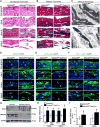
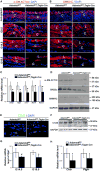
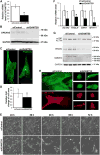
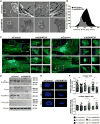
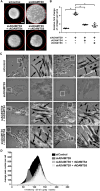
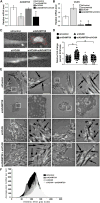
Similar articles
-
ADAMTS9-Mediated Extracellular Matrix Dynamics Regulates Umbilical Cord Vascular Smooth Muscle Differentiation and Rotation.Cell Rep. 2015 Jun 16;11(10):1519-28. doi: 10.1016/j.celrep.2015.05.005. Epub 2015 May 28. Cell Rep. 2015. PMID: 26027930 Free PMC article.
-
Inverted formin 2 in focal adhesions promotes dorsal stress fiber and fibrillar adhesion formation to drive extracellular matrix assembly.Proc Natl Acad Sci U S A. 2015 May 12;112(19):E2447-56. doi: 10.1073/pnas.1505035112. Epub 2015 Apr 27. Proc Natl Acad Sci U S A. 2015. Retraction in: Proc Natl Acad Sci U S A. 2018 Mar 20;115(12):E2900. doi: 10.1073/pnas.1803125115. PMID: 25918420 Free PMC article. Retracted.
-
Vascular smooth muscle cell phenotypic changes in patients with Marfan syndrome.Arterioscler Thromb Vasc Biol. 2015 Apr;35(4):960-72. doi: 10.1161/ATVBAHA.114.304412. Epub 2015 Jan 15. Arterioscler Thromb Vasc Biol. 2015. PMID: 25593132
-
Matrix-degrading podosomes in smooth muscle cells.Eur J Cell Biol. 2006 Apr;85(3-4):183-9. doi: 10.1016/j.ejcb.2005.08.001. Epub 2005 Sep 12. Eur J Cell Biol. 2006. PMID: 16546560 Review.
-
Proteoglycans in atherosclerosis and restenosis: key roles for versican.Circ Res. 2004 May 14;94(9):1158-67. doi: 10.1161/01.RES.0000126921.29919.51. Circ Res. 2004. PMID: 15142969 Review.
Cited by
-
Characterization of ADAMTS9 proteoglycanase activity: Comparison with ADAMTS1, ADAMTS4, and ADAMTS5.J Biol Chem. 2025 Jul;301(7):110301. doi: 10.1016/j.jbc.2025.110301. Epub 2025 May 29. J Biol Chem. 2025. PMID: 40449594 Free PMC article.
-
Disease modeling of ADAMTS9-related nephropathy using kidney organoids reveals its roles in tubular cells and podocytes.Front Med (Lausanne). 2023 Mar 23;10:1089159. doi: 10.3389/fmed.2023.1089159. eCollection 2023. Front Med (Lausanne). 2023. PMID: 37035301 Free PMC article.
-
Extracellular Matrix in Heart Failure: Role of ADAMTS5 in Proteoglycan Remodeling.Circulation. 2021 Dec 21;144(25):2021-2034. doi: 10.1161/CIRCULATIONAHA.121.055732. Epub 2021 Nov 22. Circulation. 2021. PMID: 34806902 Free PMC article.
-
The intricate cellular ecosystem of human peripheral veins as revealed by single-cell transcriptomic analysis.PLoS One. 2024 Jan 11;19(1):e0296264. doi: 10.1371/journal.pone.0296264. eCollection 2024. PLoS One. 2024. PMID: 38206912 Free PMC article.
-
Adamts10 inactivation in mice leads to persistence of ocular microfibrils subsequent to reduced fibrillin-2 cleavage.Matrix Biol. 2019 Apr;77:117-128. doi: 10.1016/j.matbio.2018.09.004. Epub 2018 Sep 7. Matrix Biol. 2019. PMID: 30201140 Free PMC article.
References
-
- Abercrombie M, Dunn GA. Adhesions of fibroblasts to substratum during contact inhibition observed by interference reflection microscopy. Exp Cell Res. 1975;92:57–62. - PubMed
-
- Bidwell MC, Eitzman BA, Walmer DK, McLachlan JA, Gray KD. Analysis of messenger ribonucleic acid and protein for the ligands and receptors of the platelet-derived growth factor signaling pathway in the placenta, extraembryonic membranes, and uterus during the latter half of murine gestation. Endocrinology. 1995;136:5189–5201. - PubMed
-
- Bissell MJ, Aggeler J. Dynamic reciprocity: how do extracellular matrix and hormones direct gene expression? Prog Clin Biol Res. 1987;249:251–262. - PubMed
MeSH terms
Substances
Grants and funding
LinkOut - more resources
Full Text Sources
Other Literature Sources
Molecular Biology Databases

